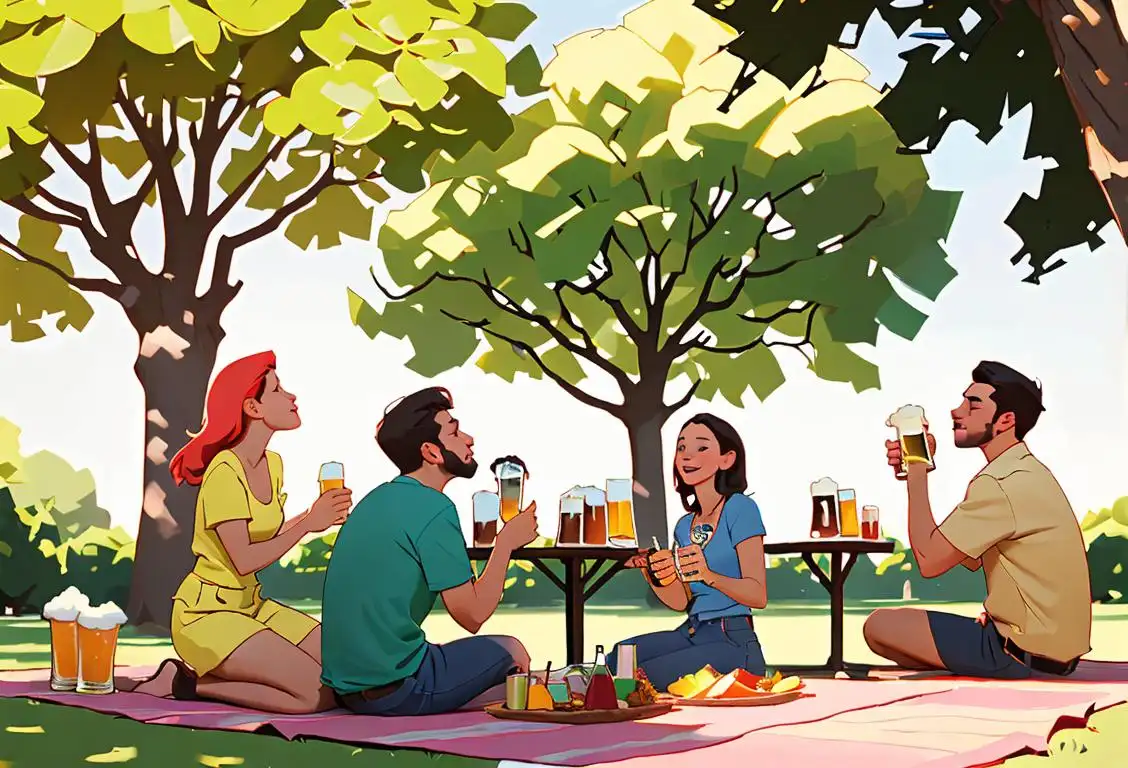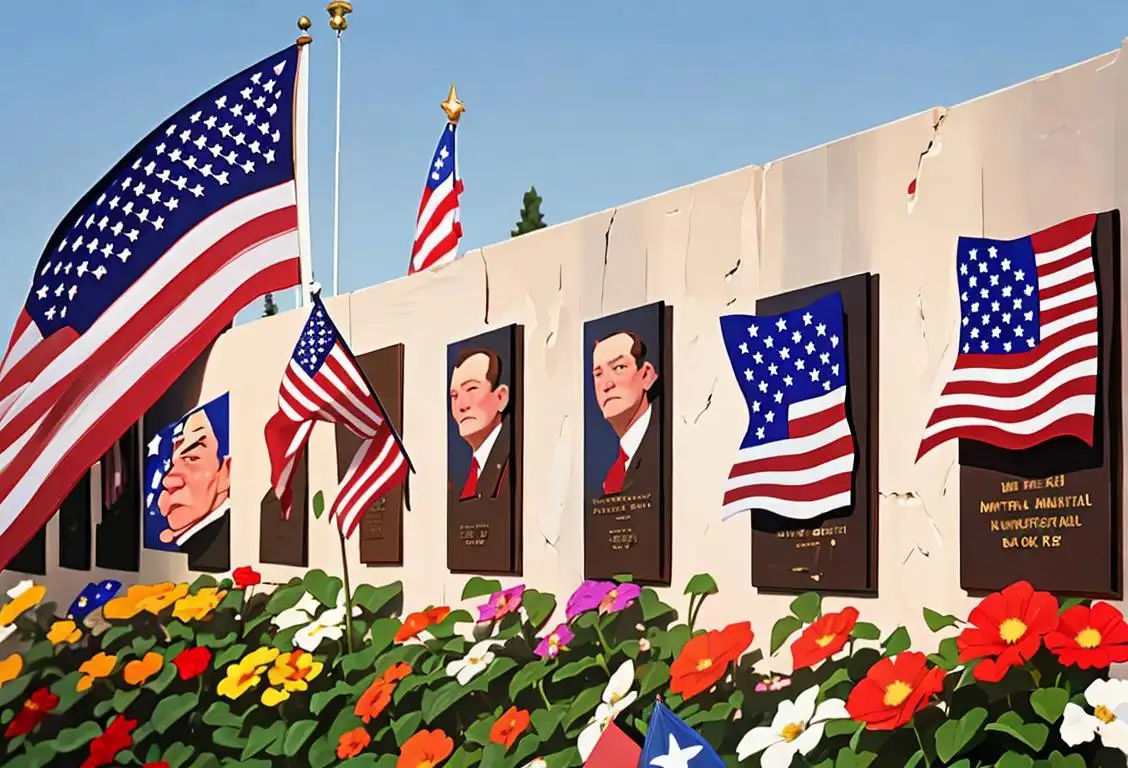National Family Bowling Day

Hey there, fellow bowlers and lovers of all things family-oriented! Today, we have a special day that combines quality time with your loved ones and the excitement of sports. It's National Family Bowling Day! So, lace up your bowling shoes, grab your nearest and dearest, and let's roll into the delightful world of family bowling!
When is Family Bowling Day?
It's national family bowling day on the 11th October.
The Internet History of National Family Bowling Day
On this special day, families around the country come together to celebrate the joy and thrill of bowling. But have you ever wondered how this day came to be? Let's dive into the internet history of National Family Bowling Day and uncover its origins.
Contrary to popular belief, National Family Bowling Day is not an ancient tradition that dates back centuries. It's a relatively new addition to the impressive roster of national days. Although we couldn't find much information on the exact origins, we can safely assume that it was established to encourage families to bond, have fun, and enjoy a friendly competition on the bowling lanes.
Over the years, bowling has become a popular pastime for families, providing a perfect mix of entertainment, exercise, and friendly rivalry. Whether you're a seasoned bowler or a first-timer, there's something undeniably charming about the sound of the pins crashing and the satisfaction of landing a strike.
Thanks to the power of the internet, National Family Bowling Day gained more recognition and popularity than ever before. People from all corners of the world now come together online to share their experiences, tips, and hilarious bowling fails on this special day.
Fun Family Bonding and Did-You-Know Fact
Now, let's dive into a fun related fact about bowling that can spark some interesting conversations during your family bowling outing: Did you know that bowling has been around for thousands of years? Ancient Egyptians played a game similar to modern-day bowling over 7,000 years ago. However, instead of using actual bowling balls, they rolled stones at targets made of other stones. Imagine the sound of crashing stones instead of pins!
History behind the term 'Family Bowling'
1930
The Birth of Bowling Alleys
In the 1930s, bowling alleys started emerging as popular entertainment venues across the United States. These establishments featured long, narrow lanes with pins at the end to create a challenging target. It quickly became a favorite pastime for people of all ages.
1840
The Birth of Bowling Alleys
The origins of family bowling can be traced back to the early 1840s when the first indoor bowling alley, known as Knickerbocker Alleys, was opened in New York City. These alleys revolutionized the sport by bringing it indoors, allowing people to bowl regardless of the weather conditions. The popularity of these alleys grew rapidly, drawing families and friends together to enjoy a friendly game of bowling.
1939
The Birth of Bowling Alleys
In 1939, the first dedicated bowling alley opened in the United States. This establishment, called the Bambury Bowling Center in Connecticut, provided a place for people to gather and enjoy the sport of bowling. The introduction of bowling alleys laid the foundation for the future popularity of family bowling.
1900
The Invention of the Pinsetter
In the year 1900, mechanical engineer John J. Monsey invented the first automatic pinsetter. This ingenious device made it much easier and quicker to reset the pins after each roll. The invention of the pinsetter was a crucial step towards the development of family bowling, as it eliminated the need for manual pin resetting, allowing for a more efficient and enjoyable bowling experience.
1880
Invention of Automatic Pinsetters
In the late 1880s, mechanical pinsetters were introduced, forever changing the landscape of bowling. This innovation eliminated the need for individuals to manually set up the pins after each throw, making the game more efficient and enjoyable for families. The invention of automatic pinsetters contributed significantly to the growth of family bowling, as it reduced the time between throws and allowed players to focus more on the game itself.
1939
The Birth of Family Bowling
In 1939, a trendsetter named Ed Kretz Sr., who was a promoter of family-friendly activities, introduced the concept of family bowling. He envisioned bowling as a recreational activity that could be enjoyed by people of all ages and skill levels, including children. By creating a welcoming and inclusive atmosphere, Kretz helped popularize the idea of families gathering together for a fun bowling session, creating lasting memories and strengthening their bonds.
1940s
Bowling Becomes a Family Activity
During the 1940s, bowling began to gain popularity as a family activity. As more bowling alleys were built across the country, families started to spend their leisure time together, enjoying the competitive and social aspects of the game. Bowling became a popular pastime for families to bond and have fun.
1952
Family-Oriented Bowling Centers
In 1952, the concept of family-oriented bowling centers was introduced. These centers were specifically designed to cater to families and encourage participation from people of all ages. They offered a more inclusive and recreational approach to bowling, focusing on providing a fun-filled experience for the whole family.
1950s
League Bowling and Television Exposure
In the 1950s, league bowling took off, with many families joining bowling teams and competing against each other. This led to increased exposure of the sport on television. Broadcasting companies recognized the growing interest in bowling and began airing tournaments, showcasing the skill and excitement of the sport to a wider audience. Bowling was now firmly established as a popular activity for families both in person at the alleys and on their TV screens.
1960
Expansion of Bowling Centers
During the 1960s, bowling grew in popularity, leading to the expansion of bowling centers across the United States. Family-oriented bowling centers started to emerge, equipped with multiple lanes, modern conveniences, and a welcoming ambiance. These centers provided a safe and enjoyable environment for families to engage in friendly competition, socialize, and create unforgettable moments.
1960
The Popularity of Family Bowling
During the 1960s, family bowling gained significant popularity. The concept of spending quality time with loved ones in a relaxed and enjoyable atmosphere resonated with many. Family bowling leagues and tournaments also started to emerge, further fueling its popularity among families.
1950
The Rise of Television Bowling
The 1950s marked a turning point in the popularity of family bowling with the advent of televised bowling tournaments. As televised broadcasts of professional bowling gained traction, families across the country became fascinated by the skill and excitement displayed by the players. The exposure to professional bowling on television elevated the status of the sport and drew more families to bowling alleys to try their hand at the game.
1961
The Formation of the American Bowling Congress Youth Program
In 1961, the American Bowling Congress (ABC) established a dedicated youth program to encourage more young people to participate in the sport. This program provided opportunities for children and teenagers to learn and develop their bowling skills, fostering a sense of camaraderie and competition within the family. The ABC Youth Program played a significant role in promoting family bowling and cementing its place as a wholesome and inclusive activity.
1976
The Rise of Cosmic Bowling
Cosmic bowling, characterized by black lights, neon colors, and upbeat music, emerged in 1976. This modern twist on traditional bowling added an element of excitement and a party-like atmosphere to the game. Cosmic bowling sessions often took place in the evenings and attracted families looking for a unique entertainment experience.
1961
The First Bowling Family-Style Entertainment Center
In 1961, the first family-style entertainment center dedicated to bowling was opened in Anaheim, California. Known as the 'Yankee Lanes,' this center revolutionized the concept of family bowling by combining it with various other recreational activities such as arcade games, billiards, and dining options. This new entertainment format attracted not only avid bowlers but also those looking for a fun-filled outing with their families and friends.
1972
Professional Bowling Association Allows Family Participation
In 1972, the Professional Bowling Association (PBA) made a significant decision to allow family members of professional bowlers to participate in tournaments. This decision not only highlighted the importance of family support in the sport but also encouraged more families to engage in bowling as a recreational activity. This move by the PBA helped solidify the presence of family bowling as an integral part of the bowling culture.
1990s
Bowling as a Social Outing
In the 1990s, bowling became more than just a sports activity; it transformed into a social outing. Many families started frequenting bowling centers not only to play the game but also to enjoy the camaraderie and social interaction it offered. Bowling centers began to incorporate arcades, restaurants, and other entertainment options to enhance the overall experience.
2000s
The Modern Era of Family Bowling
In the 2000s, family bowling underwent a transformation with the integration of advanced technology. Bowling alleys started incorporating interactive scoring systems, cosmic bowling with blacklights, and themed environments to enhance the overall bowling experience for families. These modern amenities have made family bowling increasingly popular, providing a social and recreational activity that spans generations.
1979
The Rise of Family Bowling Centers
By the late 1970s, the concept of family bowling centers had become a popular trend. These centers were designed to cater specifically to families, offering a range of entertainment options alongside bowling, such as arcades, restaurants, and lounges. The family bowling center was a one-stop destination for a fun-filled day out with loved ones, further solidifying the significance of family bowling in American culture.
1990s
Rise of Cosmic Bowling
In the 1990s, a new trend called 'Cosmic Bowling' or 'Glow Bowling' emerged, adding a touch of excitement and entertainment to the family bowling experience. Cosmic Bowling introduced blacklights, laser lights, disco balls, and vibrant music, transforming the bowling alley into a captivating cosmic atmosphere. This modern twist on family bowling further attracted younger generations and enhanced the overall enjoyment of the game.
Present
Continued Enjoyment and Evolution
Family bowling remains a popular activity to this day. It continues to evolve with the introduction of new technologies, such as automatic scoring systems and interactive displays. While the core essence of family bowling remains unchanged, it has adapted to the preferences and expectations of modern families, ensuring its ongoing appeal in the ever-changing landscape of entertainment.
Did you know?
Did you know that bowling has been around for thousands of years? Ancient Egyptians played a game similar to modern-day bowling over 7,000 years ago. However, instead of using actual bowling balls, they rolled stones at targets made of other stones. Imagine the sound of crashing stones instead of pins!Tagged
fun loved ones sportsFirst identified
11th October 2020Most mentioned on
11th October 2020Total mentions
19Other days
Suicide Prevention Month Day
Happiness Day
Drink A Beer Day
Trivia Day
Cancer Survivors Day
Take A Hike Day
Memorial Day
Foundation Day
Bobblehead Day
Bowling Day









